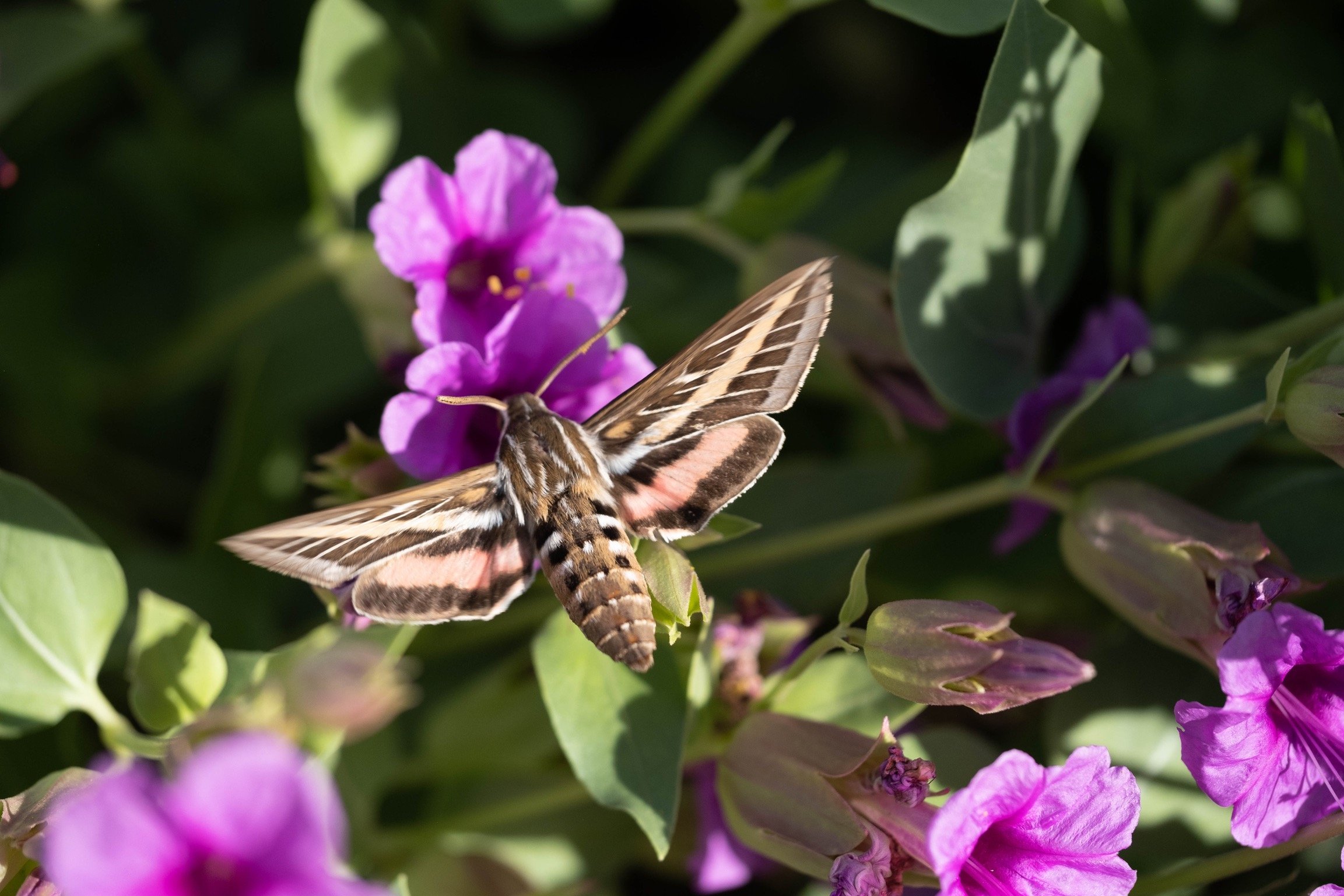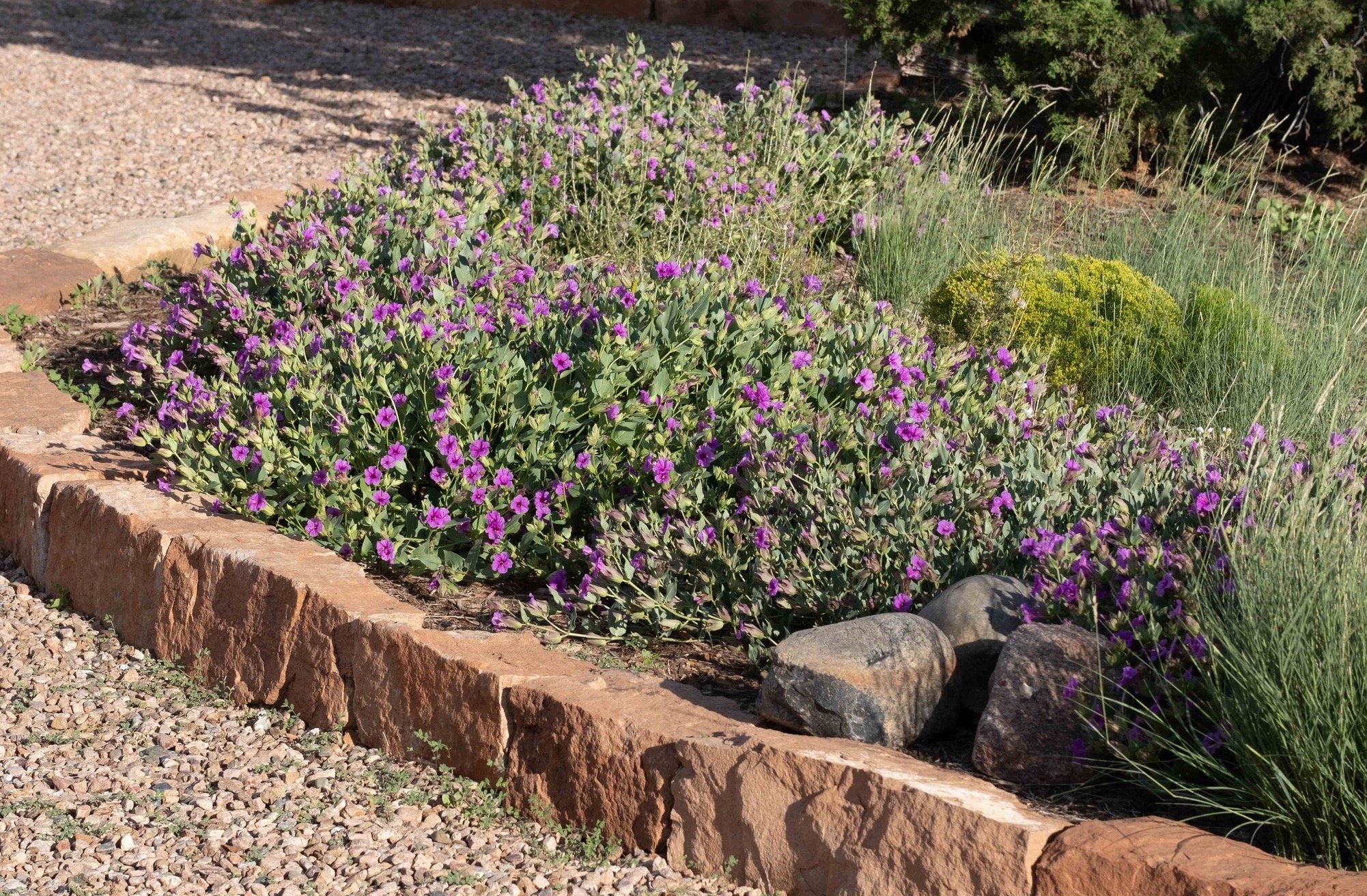Desert Four O'Clock
Desert Four O’Clock (Mirabilis multiflora)
By Pam McFarland
As I approach a certain portion of my yard in the summer and early fall, I hear the unmistakable sound of white-lined sphinx moths (Hyles lineata) making their way to my main Desert Four O’clock patch. They feed on the copious nectar of the showy magenta tubular flowers measuring 2 inches across and 2 to 3 inches long. The females lay eggs on the leaves and the caterpillars feast on the leaves before dropping to the ground and pupating underground, emerging in two weeks as the next generation of Hyles lineata.
My romance with Mirabilis multiflora started with a few specimens planted in an area of my yard with severely disturbed lean soil. The next winter the plants died back and the plant skeletons broke off at ground level and rolled down the slope, dropping hundreds of peppercorn-sized seeds in the disturbed soil. The next spring dozens of Mirabilis multiflora popped up — a welcome addition to the once bare hillside.
The Latin name Mirabilis multiflora translates to "wondrous multi-flowered plant.” It is native to the Southwest and northern Mexico, growing in gravelly and sandy soils in sun and partial shade.
The plants form dense dark green clumps up to 2 feet tall by 3 feet wide, and from June to September the plants are covered with magenta flowers that open on cloudy days and in late afternoon, hence the common name Desert Four O’Clock. The plants have a famously deep tap root measuring up to 4 feet long and 4 inches in diameter.
Landscape use: Mirabilis multiflora is extremely dense and perfect for smothering out weeds. The sphinx moths and hummingbirds visiting the flowers provide endless entertainment.
Because Mirabilis multiflora produces many seeds, it is ideal for informal portions of your yard. You may prefer it in the more formal areas of your yard; seedlings are easy to pull the first year before they form deep tap roots.
Planting and care: Mirabilis multiflora plants can be transplanted in spring when daytime temperatures are above 75 degrees. They prefer well-drained, lean soil; in the wild the plants often cluster around the base of juniper and piñon trees. They are easily grown from seeds — cold stratify the seeds for two months and sow ½-inch deep in the spring, or sow seeds in fall for the next year. Once established, the plant needs no supplemental irrigation although the foliage and flowers are more lush if deeply watered every 3 to 4 weeks.
Plant type: herbaceous perennial
Bloom time: summer to fall Size: 2 feet tall by 3 feet wide
Sun: full sun to part shade
Soil: any soil, even sand or clay
Water: xeric, no supplemental water once established
USDA zones: 4–8
Elevation: 2,500-7,500 feet
References:
Phillips, Judith. “New Mexico Gardeners Guide.” Cool Springs Press, 2005.
Mirabilis multiflora, Lady Bird Johnson Wildflower Center Plant Database.
Mirabilis multiflora as edging and groundcover ⎸Courtesy Pam McFarland
NOTE: This story was featured in the June 1 edition of the SFEMG Newsletter.


